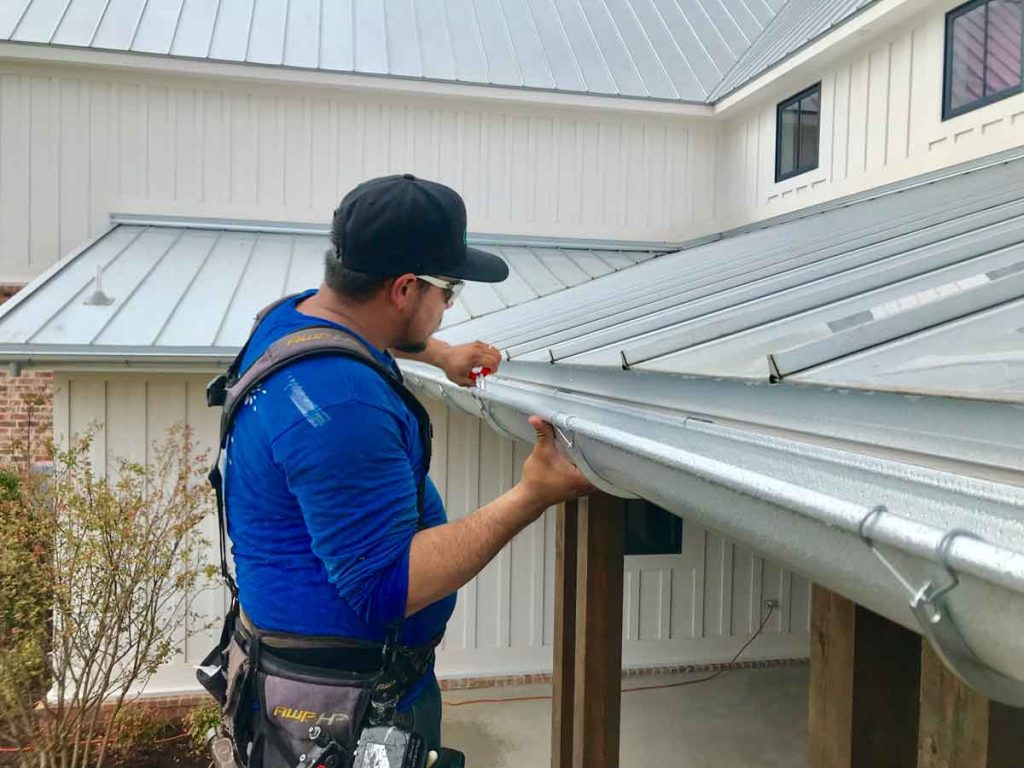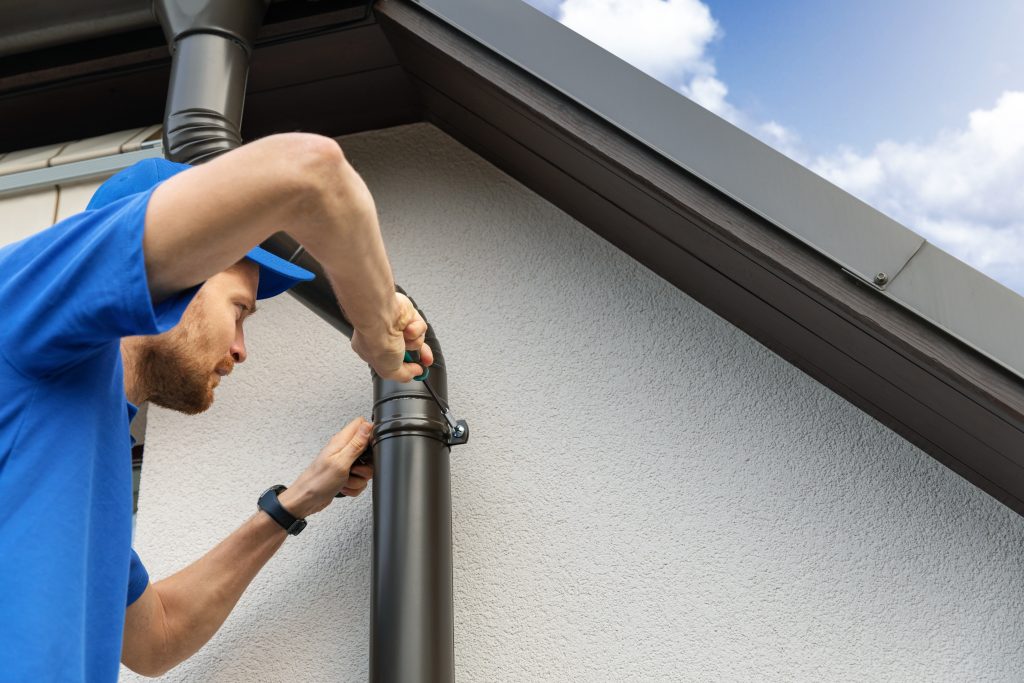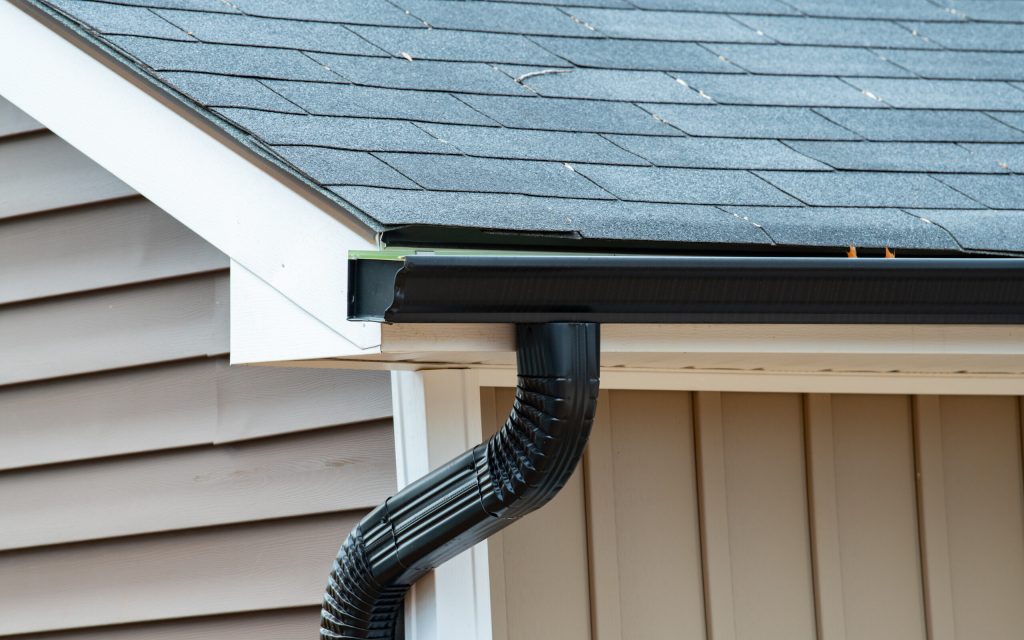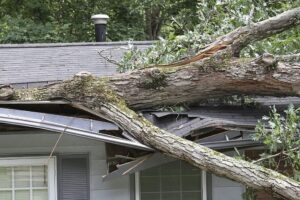When it comes to protecting your home from water damage, few systems are as important as your gutters. Homeowners in Cleveland, Ohio, understand this better than most. The region’s challenging weather patterns—harsh winters, heavy snow, pounding rain, and seasonal temperature swings—can wreak havoc on even the sturdiest gutter systems. In this blog, we’ll explore how Cleveland’s weather damages gutters, what signs indicate it’s time for a replacement, and how timely action can save your home from costly repairs. If you’re experiencing issues with your gutters in Cleveland, this guide will help you know exactly what to look for.
Cleveland Weather: A Perfect Storm for Gutter Damage
Cleveland’s climate features four distinct seasons, with winters that are especially brutal. Snowstorms, ice dams, freeze-thaw cycles, and lake-effect snow create immense pressure on gutters. Spring and summer bring heavy rains and thunderstorms, which only add to the burden.

Here’s how each season contributes to gutter damage:
1. Winter: Ice and Snow Build-Up
During winter, gutters often accumulate snow and ice. When the snow melts and refreezes at night, it forms ice dams that block proper drainage. These ice dams can become very heavy, pulling the gutters away from the fascia board or even causing them to collapse entirely.
2. Spring: Melting Snow and Rainstorms
As temperatures rise, snow begins to melt rapidly, often accompanied by rainstorms. Gutters clogged with debris or damaged over winter may not be able to handle the sudden water volume, leading to overflowing and pooling around the foundation—a recipe for water damage.
3. Summer: Thunderstorms and Heat
Summers in Cleveland may not be extreme, but sudden thunderstorms can drop significant amounts of rain in a short time. Combined with leaves, twigs, and other summer debris, this can clog gutters quickly. In addition, UV rays can slowly weaken vinyl or plastic gutter materials over time.
4. Fall: Leaves and Debris
Autumn is arguably the worst season for gutter clogs. As trees shed their leaves, gutters often become blocked. A clogged gutter in fall can lead to winter ice dams, setting off a cycle of damage that repeats annually.
Types of Weather-Related Gutter Damage
Understanding how the weather affects gutters helps you identify when your system might be at risk. Here are the most common types of damage caused by Cleveland’s weather:
1. Sagging Gutters
Heavy snow and ice put downward pressure on gutters. Over time, this can cause them to sag or separate from the house. You may notice sections of the gutter that dip lower or hang loosely from the fascia.
2. Cracks and Leaks
Extreme temperatures cause expansion and contraction of the gutter material, especially in plastic and vinyl systems. This constant stress leads to cracks, holes, or weak seams that leak water onto the siding or foundation.
3. Rust and Corrosion
Metal gutters, particularly older steel ones, are prone to rust. Moisture trapped from leaves or snow speeds up the corrosion process, which weakens the gutter structure and leads to eventual failure.
4. Detachment from Fascia Boards
Repeated freeze-thaw cycles can loosen the fasteners holding gutters in place. Water trapped behind gutters can also rot the wooden fascia, causing gutters to detach entirely.
5. Mold and Mildew Growth
Poor drainage from faulty gutters allows water to seep into the foundation and siding. This moisture creates ideal conditions for mold and mildew—both of which are hazardous to your home’s structure and your family’s health.
Warning Signs: When Should You Replace Your Gutters?
It’s important to inspect your gutters regularly—especially after extreme weather. Here are some key signs that suggest it’s time for a full gutter replacement:
1. Visible Cracks or Splits
Small cracks may seem minor, but they can widen over time. If you see multiple cracks along the length of your gutters, a replacement is usually more cost-effective than patchwork repairs.
2. Peeling Paint or Rust Stains
Paint peeling off near your gutters may indicate persistent moisture leaks. Likewise, orange or brown streaks suggest rust or corrosion, which compromises structural integrity.
3. Water Marks or Pooling Around the Foundation
This is one of the most dangerous signs. If you notice standing water near your home’s foundation or water marks on the exterior walls, your gutters are not performing their job correctly.
4. Gutters Pulling Away from Roofline
If the gutter system is separating from the house, it’s not just cosmetic—this indicates underlying issues with attachment hardware or fascia rot.
5. Overflow During Rainfall
If water spills over the sides during rainstorms, even when gutters are clean, it could be due to incorrect slope, undersized systems, or damage that inhibits flow.
6. Frequent Repairs or Maintenance
If you find yourself repairing sections of your gutter every year or cleaning them excessively despite installing guards, it may be time for a durable, maintenance-free solution.
Gutter Material Matters in Cleveland
When replacing gutters in a weather-challenging area like Cleveland, material selection is critical. Here’s a comparison of common options:
- Aluminum Gutters: Popular for their durability and affordability. Resistant to rust and relatively easy to install.
- Steel Gutters: Strong and ideal for heavy snow loads, but prone to rust over time without proper maintenance.
- Vinyl Gutters: Lightweight and cheap, but susceptible to cracking in cold weather—less ideal for Cleveland’s winters.
- Copper Gutters: Highly durable and aesthetically pleasing, but very expensive.
Choose a material based on your budget, climate resilience, and long-term maintenance goals.
When Is the Best Time to Replace Gutters?
While you can replace gutters any time of year, early fall and spring are the best seasons for the job in Cleveland. These months offer mild weather, allowing for a smooth installation process before the extremes of winter or summer.

If your gutters are showing signs of failure before winter, act immediately. Waiting can increase the likelihood of water infiltration and costly damage.
Additional Tips to Protect Your Gutters in Cleveland
- Install Gutter Guards: They help block leaves and debris, reducing clogs and maintenance.
- Ensure Proper Slope: Gutters must be angled to allow smooth water flow toward the downspouts.
- Regular Inspections: Conduct visual inspections at least twice a year—spring and fall—and after major storms.
- Professional Maintenance: Hiring professionals for yearly checkups ensures you catch problems early.
Final Thoughts
Living in Cleveland means dealing with unpredictable weather—and that means your gutter system needs to be tough, efficient, and well-maintained. From ice dams and snow loads in winter to thunderstorms in summer and falling leaves in autumn, gutters take a beating year-round. By understanding how the climate affects your gutters and recognizing the signs of wear, you can make informed decisions about repair or replacement.
If you suspect your gutter system is failing or want an expert opinion, don’t wait until the damage is done. Trust a local expert who understands Cleveland’s unique weather challenges. Atlas Roofing & Restoration is here to help you protect your home with durable, high-quality gutter solutions tailored to the region’s climate. Contact us today to schedule your inspection or gutter replacement consultation.




